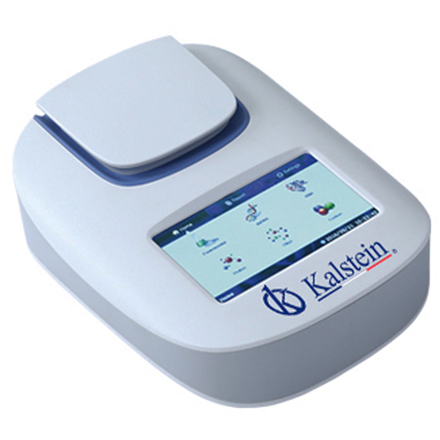A fluorometer is an important laboratory device used to measure fluorescence levels in a sample. Due to its characteristics, it is one of the most widely used devices today to obtain accurate and reliable results. The use of a suitable fluorometer can guarantee the quality of the results obtained, offering an effective tool to help develop new discoveries in laboratories. This article will present the main features and uses of a fluorometer, recommendations to ensure the reliability of experimental results and some tips for its use in the laboratory.
Its use allows us to detect fluorescence in a sample of biological material, obtaining reliable results that allow us to perform scientific experiments. The correct use of a fluorometer as well as following a safety and maintenance protocol enable to obtain reliable results in the laboratory. Kalstein as a manufacturing company we make sure to cover all your needs and meet the demands of your laboratory, reminding you that we are manufacturers, we have the best price, sales consultants in any window of the world, meet our YR series of fluorometers HERE.
Characteristics and uses of a laboratory fluorometer
A fluorometer is an accurate instrument designed to detect fluorescence in a sample of biological material, including cells, DNA, proteins and other parameters. Fluorescence is an emission of light detected by the fluorometer that occurs when an energy source, such as ultraviolet light, is applied to the sample being analyzed. This specially emitted light allows the presence of specific molecules to be detected.
These devices are widely used to detect a variety of biological parameters, such as DNA or protein content in an aqueous solution. These devices can also be used to detect any changes in DNA, allowing the scientist to perform experiments to determine the mutation of a gene sequence.
These types of devices provide reliable and frictionless results, can detect fluorescence in very dilute solutions and the ability to record the flow of the light signal also makes it a valuable tool for research laboratories. The use of a fluorometer is essential for many experiments, as with it scientists can make an accurate measurement of the biological material to be analyzed.
Ensuring the reliability of the results obtained
The results obtained with a laboratory fluorometer must be objective, accurate and reliable in order to achieve significant advances in the experiments carried out in the laboratory. Several actions are recommended to ensure that the results are accurate and free of any errors.
The first thing that is recommended is to verify that the equipment is calibrated before performing any experiment. Calibration ensures that the device is functioning properly and will allow users to obtain accurate results. The next steps to follow would be to do a thorough cleaning of the instrument and make sure that the working material is clean.
In addition, when using a fluorometer it is important to follow proper safety protocol to ensure that the device is working properly and to prevent injury or damage to the equipment. It is also advisable to keep a record of the results obtained for all experiments performed with the fluorometer. This will allow scientists to study the data generated in more detail.
Tips for using a fluorometer in the laboratory
When using a fluorometer in the laboratory, it is advisable to take into account a number of useful tips to ensure that the results obtained are accurate. The first step is to carefully read the equipment manual to understand how the device works. In addition, it is recommended to handle the equipment with care and to check that all cables are connected correctly.
It is also important to consider the parameter settings of the device to obtain the desired results. Dome dimensions, UV light intensity and temperature can affect the results obtained and should be properly controlled. Finally, it is advisable to perform repeated measurements with the fluorometer to ensure the quality of the data generated and to verify that the results are as close as possible to those expected.


